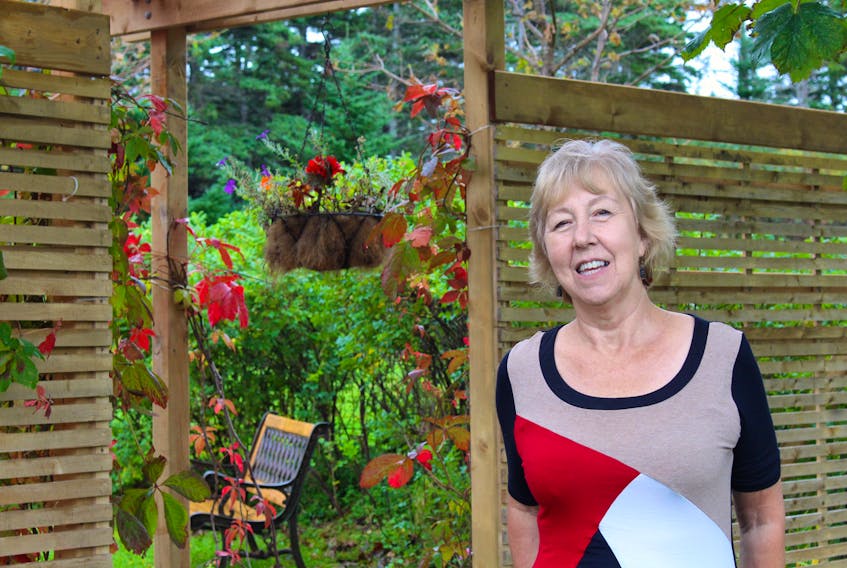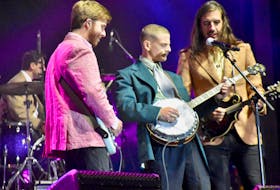In what is now an empty brick building on the west end of Water Street, across from the dockyard in downtown St. John’s, there was once a bar called the Belmont.
In the 1970s, Sheilah Roberts Lukins was in her early 20s and worked there as what was then called a barmaid.
“Its regular clientele consisted of the ladies of the night, the Portuguese sailors … and the dockyard workers,” she said. “That place was incredible.”
Working there is one possible explanation why she is so interested in the history and culture of alcohol in Newfoundland and Labrador, she says.
“I got to know people from different societal levels,” Roberts Lukins said. “I remember one night … in walks this doll with Dolly Parton hair out to here, and she was maybe four foot eight, five foot. She had a sundress on, tattoos all up both arms, little tiny piggy eyes and she sort of stalked in, looked around and sat down at a table and I had to go out and serve her. I thought, if I say something wrong, she’ll probably haul off and belt me.”
She grabbed her tray and walked over and, sheepishly, asked the woman what she would like to drink.
“This smile just brightened her face, it was like the sun coming out, and a really sweet little voice, ‘Could you get me a coke with a swizzle stick?’” she said. “Then when a sailor came along, interested, (he’d say), ‘What’re ya drinking?’ (And she’d say), ‘Oh, rum and coke.’”
It was her way of getting a drink without having the money to pay for it."
While there are a few funny stories in Roberts Lukins' new book, “Bottoms Up — A History of Alcohol in Newfoundland and Labrador,” she didn’t want to make it all a comedy show, she said.
“We can all think of a relative we have that is overly fond of the drink,” she said.
And she was naïve about how much research would be required for the project, she says.
“Newfoundland has quite the history with alcohol, as I soon found out.”
The book starts in the early 1600s, when the first fishermen came to fish off the coast.
“When they first came over … water wasn’t considered fit to drink and quite a lot of the time it wasn’t,” she said.
Without the knowledge of germs and a water system often polluted by sewage, people stuck to beer and alcohol, which would kill bacteria in the brewing and distilling process. Through experience, they realized the risk of a hangover to be more sufferable than the risk of typhoid or cholera.
“Beer, primarily, was the main drink of the common person,” she says.
One of the first things the colonists did when walking onto the island was build brew houses in Cupids and Ferryland, she said.
“You got to have your beer, right?” she said.

Plenty of stories
Some of the research used in the book comes from Steve Mills, who worked as an archeologist for 30 years.
“My grandfather had a bunch of beer shops back in the 1930s in downtown St. John’s,” Mills said. “He told me lots of stories.”
The early 1930s were hard times in St. John’s, his grandfather, Dick O’Brien, told him.
“He said the only way you could get people in was to basically make beer over proofed,” Mills said. “(Inspectors) used to come down and test alcohol every now and then. And they shut him down about five or six times. He’d go to jail for 10 days or whatever, and he’d get out and he’d open up another one.”
His grandfather gave up his life of crime when he was about 20 years old and opened a grocery store, Mills said.
“He was quite a colourful character as well, so … I’ve always had an interest in that whole tavern (culture),” he said.
During his work, Mills dug up a couple of taverns, or tippling houses, in Renews. One was a small house with an earthen floor and a massive fireplace at the back.
“We found thousands of fragments of clay pipes and also a number of fragments of cups,” Mills said.
Looking at historical records, almost every permanent resident of Newfoundland in the 1600s ran a tippling house, Mills said.
“Even in a small harbour like Renews you could have four to 500 men coming from England,” he said.
Much like today, many would spend their day off from work drinking beer, eating food and talking.
“Just like you and I, you go out with your pals and you shoot the breeze,” Mills said. “And singing — lots of music.”
While they didn't find any evidence of people playing music at the site in Renews, a tuning peg from a fiddle was found when he was digging on 17th- and 18th-century sites in Placentia.
“These are traditional activities that would have happened back in the 1500s and 1600s,” Mills said.
“Bottoms Up – A History of Alcohol in Newfoundland and Labrador” is published by Breakwater Books and is available online and in stores.









